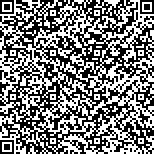本文已被:浏览 820次 下载 443次
投稿时间:2021-04-22 网络发布日期:2021-12-20
投稿时间:2021-04-22 网络发布日期:2021-12-20
中文摘要: 目的 探讨加强产科母婴同室健康新生儿黄疸规范管理对高胆红素血症临床转归的影响,以及社区全科医生对新生儿保健工作的重要性。方法 回顾性分析2014年7月至2020年6月安顺市人民医院新生儿科病房收治的并在同院产科分娩的1 921例新生儿高胆红素血症患儿的临床资料。以2014年7月至2017年6月收治者为对照组(未对产科出生新生儿进行规范黄疸监测),2017年7月至2020年6月收治者为管理组(新生儿科医生每日对产科病房所有健康新生儿进行规范黄疸监测管理并指导新生儿喂养)。比较两组临床资料,采用Logistic回归讨论重症高胆红素血症的影响因素。结果 (1)入院时日龄、黄疸出现时间、入院时血清总胆红素值,管理组与对照组相比差异均有统计学意义(P<0.01)。加强新生儿喂养指导后混合喂养率由管理前的26.0%提升至42.5%,差异有统计学意义(P<0.01);新生儿随母亲从产科出院后因“新生儿高胆红素血症”再次入院治疗率由规范管理前的47.7%降至38.0%,差异有统计学意义(P<0.01);严重高胆红素血症发生率由规范管理前的22.0%降至10.2%,差异有统计学意义(P<0.01)。(2)对照组中日龄[OR=1.070,95%CI(1.016~1.128),P=0.010]及黄疸出现时间[OR=1.372,95%CI(1.127~1.669),P=0.002]是发生严重高胆红素血症的危险因素,而喂养方式及新生儿溶血病无统计学意义(P>0.05)。在规范管理后,日龄仍是发生严重高胆红素血症的危险因素[OR=1.241,95%CI(1.156~1.333),P<0.01],但黄疸出现时间无统计学意义(P>0.05);而喂养方式(OR=0.750,95%CI(0.591~0.952),P=0.018]及早期发现溶血症并积极干预[OR=0.429,95%CI(0.237~0.777),P=0.005]是发生严重高胆红素血症的保护因素。结论 健康新生儿出生后即开始规范管理监测黄疸能有效降低再入院率及严重高胆红素血症发生率,出院后转入社区应由全科医生继续新生儿保健工作,以利尽早发现需要治疗的高胆红素血症患儿,减少严重高胆红素血症的发生率。
Abstract:Objective To explore the effect of strengthening the standardized management of neonatal jaundice in mother-infant room on the clinical outcome of hyperbilirubinemia and the importance of community general practitioners on neonatal health care. Methods A retrospective analysis was performed on the clinical data of 1 921 neonates with hyperbilirubinemia admitted to People's Hospital of Anshun City from July 2014 to June 2020 and delivered in the same hospital. Newborns admitted from July 2014 to June 2017 were taken as control group (without standardized monitoring of neonatal jaundice), and newborns admitted from July 2017 to June 2020 were taken as the management group (with standardized monitoring of neonatal jaundice and neonatal feeding). The clinical data of the two groups were compared and Logistic regression was used to discuss the influencing factors of the outcome of neonates with severe hyperbilirubinemia. Results There were statistical differences in age at admission, the appearance time of jaundice, and serum total bilirubin at admission between two groups (P<0.01). After strengthening newborn feeding guidance, mixed feeding rate increased significantly from 26.0% before management to 42.5%(P<0.01). The readmission rate of newborns due to neonatal hyperbilirubinemia after discharge from hospital decreased to 38.0% from 47.7% before standardized management (P<0.01). The incidence of severe hyperbilirubinemia decreased from 22.0% before standardized management to 10.2% (P<0.01). In control group, neonatal age [OR=1.070, 95%CI (1.016-1.128), P=0.010] and the appearance time of jaundice [OR=1.372, 95%CI (1.127-1.669), P=0.002] were the risk factors for severe hyperbilirubinemia, and while the feeding method and neonatal hemolytic disease were not significantly correlated with it(P>0.05). After standardized management, neonatal age [OR=1.241,95%CI (1.156-1.333),P<0.01] was still a risk factor for severe hyperbilirubinemia, but the appearance time of jaundice was not statistically correlated with it (P>0.05). However, the feeding mode [OR=0.750, 95%CI(0.591-0.952), P=0.018] and the early detection and active intervention of hemolysis [OR=0.429, 95%CI(0.237-0.777), P=0.005] were the protective factors in the prevention of severe hyperbilirubinemia. Conclusion The standardized management and monitoring of jaundice in healthy newborns can effectively reduce the rate of readmission and the incidence of severe hyperbilirubinemia. After being transferred to the community after discharge, the general practitioner should continue the neonatal health care work in order to find the children with hyperbilirubinemia that need to be treated as soon as possible, and reduce the incidence of severe hyperbilirubinemia.
keywords: Hyperbilirubinemia Newborns Transcutaneous bilirubin Jaundice monitoring and management General practitioner
文章编号: 中图分类号:R722.13+5 文献标志码:A
基金项目:
附件
| 作者 | 单位 |
| 陆国梁1,2 | 1. 贵州医科大学儿科学院,贵州 贵阳 550004;2. 贵州省安顺市人民医院新生儿科,贵州 安顺 561000 |
| 岳龙飞3 | 3. 贵州省安顺市人民医院全科医学科,贵州 安顺 561000 |
| 朱晓萍1 | 1. 贵州医科大学儿科学院,贵州 贵阳 550004 |
| Author Name | Affiliation |
| LU Guo-liang*,YUE Long-fei, ZHU Xiao-ping | *Pediatrics School, Guizhou Medical University, Guiyang, Guizhou 550004, China |
引用文本:
陆国梁,岳龙飞,朱晓萍.新生儿高胆红素血症患儿规范管理前后的临床转归[J].中国临床研究,2021,34(12):1635-1640.
陆国梁,岳龙飞,朱晓萍.新生儿高胆红素血症患儿规范管理前后的临床转归[J].中国临床研究,2021,34(12):1635-1640.
